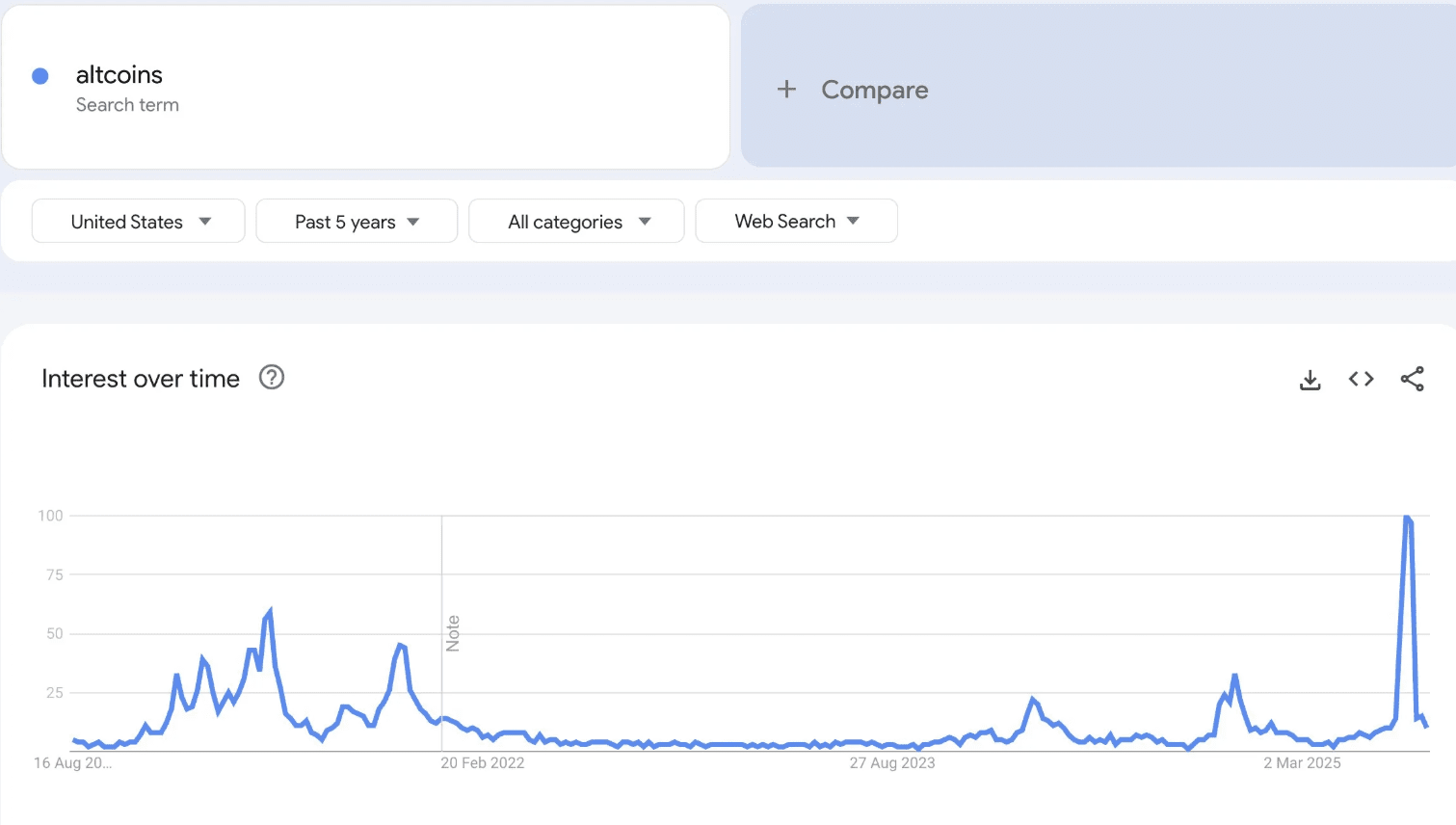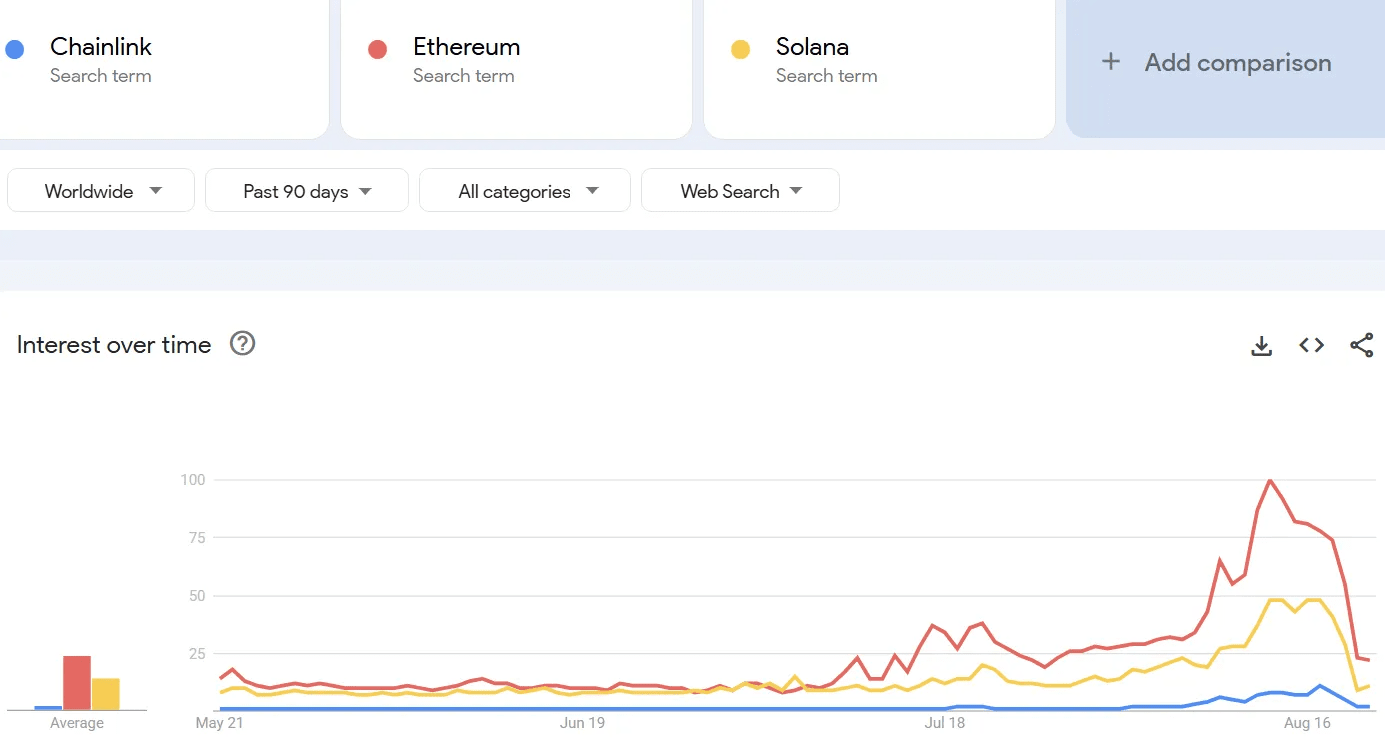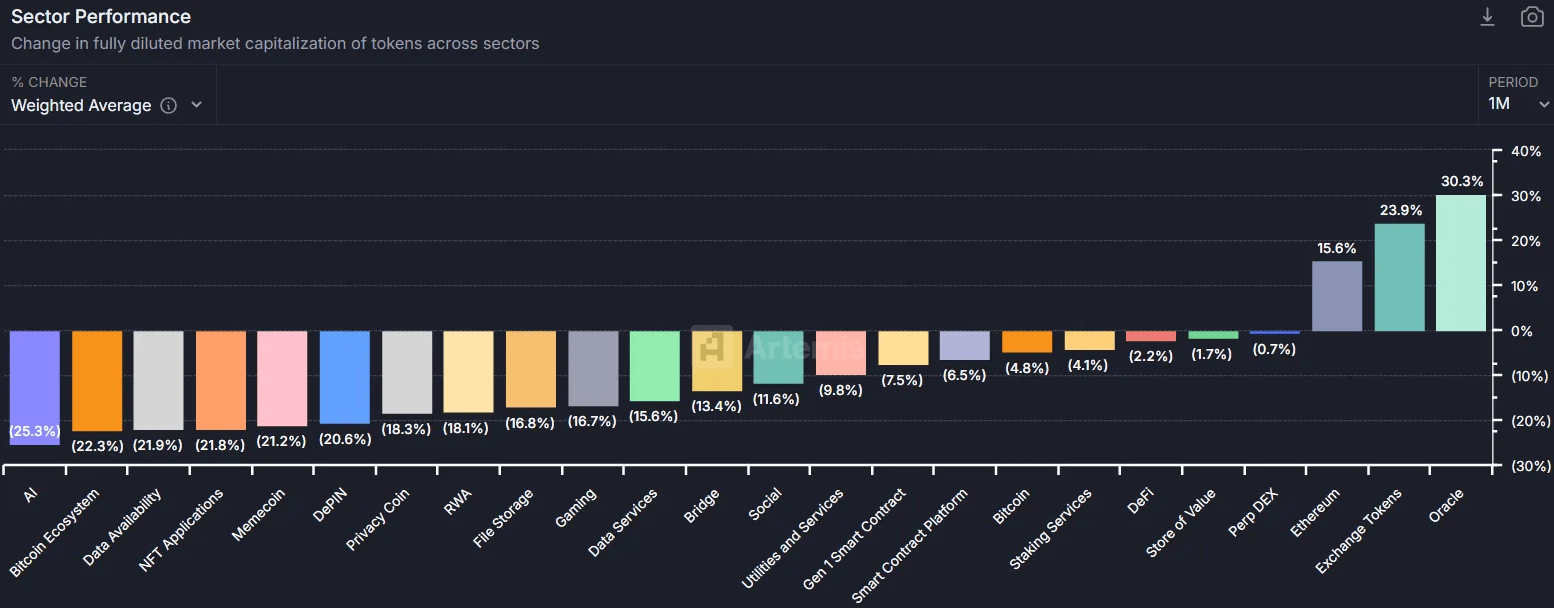Recently, the search volume for the term 'altcoin' skyrocketed on Google Trends, quickly reaching an all-time high (ATH). However, within just one week, this search volume decreased sharply.
This raises an important question: Is the so-called 'altcoin season' just a fleeting illusion?
The excitement about the altcoin season quickly faded as Google Trends declined.
Many investors view Google Trends as an indicator of new interest from retail investors. History shows that when a cryptocurrency-related term trends on Google, there is often a flow of new capital into related projects.
Last August, an unusual phenomenon occurred. Data from Google Trends in the U.S. showed searches for 'altcoin' surged to new highs, but just a week later, it returned to low levels.

This phenomenon is not only happening in the U.S. On a global scale, Google Trends also recorded searches for 'altcoin' reaching a peak score of 100 before dropping to 16 in just one week. A similar 'pump and dump' pattern also emerged with 'alt season' and the names of top altcoins.

"Google searches about alt season pumped and dumped faster than a meme coin pack," Mario Nawfal mocked.
The chart shows that the altcoin season may have ended almost as soon as it began. The market capitalization of altcoins (TOTAL3) reflects this trend, as it rose from $1 trillion to $1.1 trillion, only to return to $1 trillion in the same timeframe.
Some analysts remain optimistic. Cyclop, a popular analyst on X, believes the increase in searches for the keyword 'altcoin' still carries positive significance. He argues that this term has become more popular.
"The peak of altcoins only means greater interest compared to 2021 - but perhaps because there are currently 1000 times more coins, and 'altcoin' has become a common term. Previously, people just said 'crypto.' So, I think this mainly indicates that interest is starting to rise - but it doesn't mean we've reached a peak," Cyclop said.
There are other reasons why Google Trends may no longer be effective in measuring new demand from retail investors. Investors today often use AI tools to search for information. The broad market concepts have become so familiar that many investors no longer need to search for them on Google.
A fragmented altcoin season in August.
Data from Artemis provided deeper insights into how the altcoin season unfolded in August. While some altcoins showed strong growth, most recorded negative performance over the past month. Only three stories stood out: Ethereum, Exchange Tokens, and Oracles.
Ethereum (ETH) benefited from the accumulation of publicly listed companies. The rise of BNB and OKB boosted the Exchange Token portfolio. Meanwhile, Oracle tokens excelled mainly due to the price increase of Chainlink (LINK).

Each successful altcoin has its own momentum. OKB rose due to large-scale token burning, while LINK increased from Chainlink's reserve plans. As a result, the altcoin season remains fragmented and does not meet investors' expectations.
Sandeep, the CEO of Polygon, argued why future altcoin seasons may witness fewer tokens experiencing significant price increases compared to previous cycles. He emphasized the important difference in intrinsic value.
While the altcoin seasons of 2017 and 2021 primarily thrived on marketing, savvy investors today are looking for practical utility and real usefulness in the tokens they choose to invest in.
"This shows that retail investors are searching, but institutions have not yet bought into the stories. Previous altcoin seasons were driven by speculation, promises, and marketing. Money from institutions is smarter. They care about real utility and cash flow. The next altcoin season will not be like 2017 or 2021. There will be fewer tokens with actual use cases, not just tokens with better marketing," Sandeep shared.
However, analysts are not giving up hope for a larger altcoin season. Cryptocurrency exchange Coinbase and asset manager Pantera Capital predict that a new altcoin season could start as early as September.